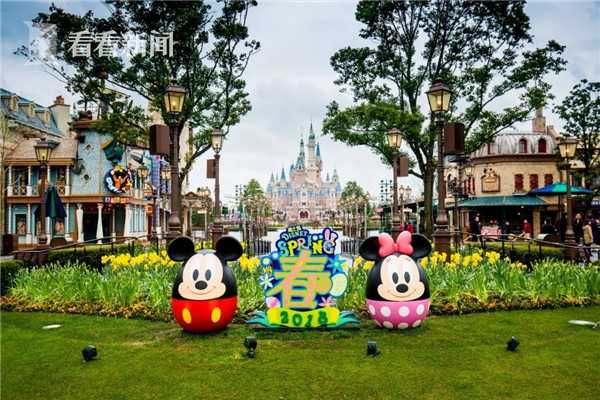
1. Use the command line tool. Use the lsb_release -a command to view the output including the release name, version number and other details. Use the cat /etc/os-release command to view files containing distribution information, including distribution name, version number and other relevant information.
2. In the Linux system, you can use the following command to view the system version: `cat /Etc/redhat-release`: Applicable to Red Hat-based Linux distributions, such as CentOS, Fedora, etc. The command will display the version number and distribution name of the system.
3. Command 2: cat /etc/issue, this command is applicable to all Linux systems. View the issue content under the /etc directory. Its meaning is to view the distribution version information of the current system. The version information displayed is relatively brief, only the system name and the corresponding Version number.
4. In Linux, you can view the operating system version through the following command: use the lsb_release command: cssCopy codelsb_releaThe se -a command will display the version information and other details of your Linux distribution.
view the Linux system release command 1: lsb_release -a, display the version information of the system.
Command 1: lsb_release -a This command is applicable to all Linux systems and will show complete version information, including the name of Linux system, such as Debian, Ubuntu, CentOS, etc., and the corresponding version number, and The code of this version, for example, will display the code jessie in Debian 8.
Check the system hairstyle version method 1 There are hundreds of distributions for the Linux system. For the version number viewing method of the distribution, take centos as an example.

Use the command line tool Use the lsb_release -a command to view the output including the distribution name, version number and other details. Use the cat /etc/os-release command to view files containing distribution information, including distribution name, version number and other relevant information.
You can only view them one by one.: Log in to the linux server and execute the lsb_release-a command to view all version information. 2: Log in to linux to execute cat/etc/issue (remember to leave one space after cat) to see the version information.
Use lsb_release-a to display the version information of the system.As shown in the figure above. Cat/proc/cpuinfo, check the relevant information of cpu. As shown in the figure above. Uname-a, check the kernel information of the current system. As shown in the figure above.
In the Linux system, you can use the following command to view the system version: `cat /etc/redhat-release`: Suitable for Red Hat-based Linux distributions, such as CentOS, Fedora, etc. The command will display the version number and distribution name of the system.
Log in to the linux server to execute the lsb_release-a command to view all version information.2: Log in to linux to execute cat /etc/issue (remember to leave a blank space after cat) to see the version information.
Command 1: lsb_release -a, display the version information of the system. Command 2: cat /etc/issue, this command is applicable to all Linux systems. View the issue content under the /etc directory, which means to view the release version information of the current system. The version information displayed is relatively brief, only the system name and the corresponding version number.
Use the systeminfo command to view the window containing the operating system, hardware and system information. Enter the following command in the terminal and press Enter: systeminfo | findstr /C: Operating system.You will see the output containing the Linux distribution name and version number.
How to check the system version in linux? Let's take a look. Open the linux system and right-click on the blank space of the linux desktop. In the pop-up drop-down options, click to open the terminal. It can be found in the open Linux server terminal with the query version command.
OKX Wallet app download for Android-APP, download it now, new users will receive a novice gift pack.
1. Use the command line tool. Use the lsb_release -a command to view the output including the release name, version number and other details. Use the cat /etc/os-release command to view files containing distribution information, including distribution name, version number and other relevant information.
2. In the Linux system, you can use the following command to view the system version: `cat /Etc/redhat-release`: Applicable to Red Hat-based Linux distributions, such as CentOS, Fedora, etc. The command will display the version number and distribution name of the system.
3. Command 2: cat /etc/issue, this command is applicable to all Linux systems. View the issue content under the /etc directory. Its meaning is to view the distribution version information of the current system. The version information displayed is relatively brief, only the system name and the corresponding Version number.
4. In Linux, you can view the operating system version through the following command: use the lsb_release command: cssCopy codelsb_releaThe se -a command will display the version information and other details of your Linux distribution.
view the Linux system release command 1: lsb_release -a, display the version information of the system.
Command 1: lsb_release -a This command is applicable to all Linux systems and will show complete version information, including the name of Linux system, such as Debian, Ubuntu, CentOS, etc., and the corresponding version number, and The code of this version, for example, will display the code jessie in Debian 8.
Check the system hairstyle version method 1 There are hundreds of distributions for the Linux system. For the version number viewing method of the distribution, take centos as an example.

Use the command line tool Use the lsb_release -a command to view the output including the distribution name, version number and other details. Use the cat /etc/os-release command to view files containing distribution information, including distribution name, version number and other relevant information.
You can only view them one by one.: Log in to the linux server and execute the lsb_release-a command to view all version information. 2: Log in to linux to execute cat/etc/issue (remember to leave one space after cat) to see the version information.
Use lsb_release-a to display the version information of the system.As shown in the figure above. Cat/proc/cpuinfo, check the relevant information of cpu. As shown in the figure above. Uname-a, check the kernel information of the current system. As shown in the figure above.
In the Linux system, you can use the following command to view the system version: `cat /etc/redhat-release`: Suitable for Red Hat-based Linux distributions, such as CentOS, Fedora, etc. The command will display the version number and distribution name of the system.
Log in to the linux server to execute the lsb_release-a command to view all version information.2: Log in to linux to execute cat /etc/issue (remember to leave a blank space after cat) to see the version information.
Command 1: lsb_release -a, display the version information of the system. Command 2: cat /etc/issue, this command is applicable to all Linux systems. View the issue content under the /etc directory, which means to view the release version information of the current system. The version information displayed is relatively brief, only the system name and the corresponding version number.
Use the systeminfo command to view the window containing the operating system, hardware and system information. Enter the following command in the terminal and press Enter: systeminfo | findstr /C: Operating system.You will see the output containing the Linux distribution name and version number.
How to check the system version in linux? Let's take a look. Open the linux system and right-click on the blank space of the linux desktop. In the pop-up drop-down options, click to open the terminal. It can be found in the open Linux server terminal with the query version command.
Binance Download for PC Windows 10
author: 2025-01-23 06:11 OKX Wallet
OKX Wallet
937.81MB
Check Binance Download for PC
Binance Download for PC
278.66MB
Check OKX Wallet download
OKX Wallet download
558.32MB
Check Binance app
Binance app
764.98MB
Check OKX app
OKX app
833.36MB
Check OKX Wallet app download for Android
OKX Wallet app download for Android
454.28MB
Check OKX Wallet login
OKX Wallet login
517.61MB
Check OKX Wallet apk download
OKX Wallet apk download
155.71MB
Check OKX Wallet apk download
OKX Wallet apk download
772.15MB
Check OKX download
OKX download
967.58MB
Check OKX Wallet
OKX Wallet
641.74MB
Check OKX review
OKX review
945.39MB
Check Binance download
Binance download
642.24MB
Check Binance APK
Binance APK
311.56MB
Check Binance download APK
Binance download APK
156.25MB
Check Binance market
Binance market
648.33MB
Check Binance download
Binance download
671.96MB
Check Binance Download for PC Windows 10
Binance Download for PC Windows 10
593.97MB
Check Binance download
Binance download
796.86MB
Check Binance download
Binance download
129.45MB
Check OKX review
OKX review
618.47MB
Check Binance APK
Binance APK
262.72MB
Check OKX Wallet apk download latest version
OKX Wallet apk download latest version
872.23MB
Check Binance US
Binance US
889.43MB
Check Binance login
Binance login
397.32MB
Check Binance APK
Binance APK
927.92MB
Check Binance download
Binance download
449.41MB
Check Binance US
Binance US
824.41MB
Check Binance wikipedia
Binance wikipedia
427.34MB
Check Binance app
Binance app
231.57MB
Check OKX Wallet apk download latest version
OKX Wallet apk download latest version
591.84MB
Check Binance login
Binance login
729.75MB
Check Binance APK
Binance APK
297.22MB
Check Binance US
Binance US
945.31MB
Check Binance download iOS
Binance download iOS
497.76MB
Check Binance APK
Binance APK
758.43MB
Check
Scan to install
OKX Wallet app download for Android to discover more
Netizen comments More
2189 物力维艰网
2025-01-23 06:07 recommend
593 母难之日网
2025-01-23 05:36 recommend
1143 飞来横祸网
2025-01-23 05:30 recommend
2834 神安气集网
2025-01-23 04:53 recommend
492 暗室不欺网
2025-01-23 04:21 recommend